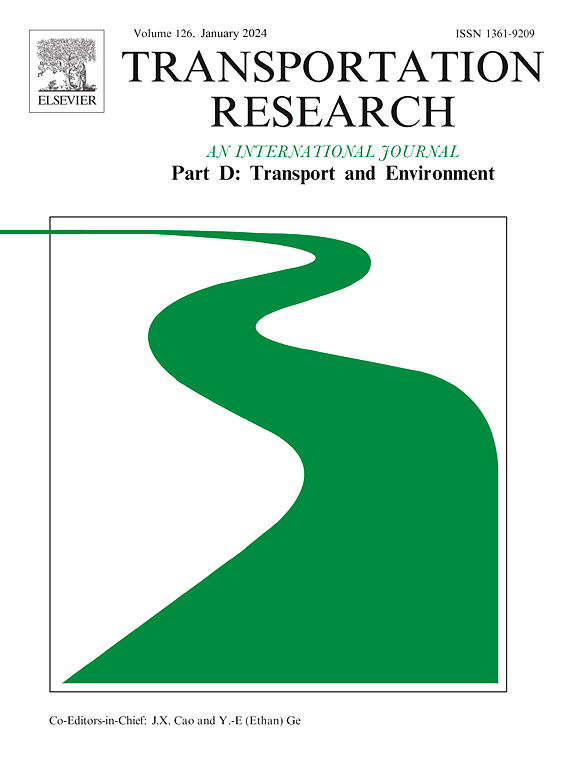Toward greener transit: Carbon-efficient density thresholds for public transit vs. private vehicles
IF 7.7
1区 工程技术
Q1 ENVIRONMENTAL STUDIES
Transportation Research Part D-transport and Environment
Pub Date : 2025-02-11
DOI:10.1016/j.trd.2025.104641
引用次数: 0
Abstract
Despite its potential as a sustainable transportation mode, public transit in many low-density urban and suburban areas in the U.S often generates more CO2 emissions per passenger-mile than privately operated vehicles (POVs), primarily due to low ridership and passenger loads. Using Gradient Boosting Decision Trees (GBDT) and spline regression models, this study investigates the non-linear relationship between population density and the relative carbon efficiency of transit compared to POVs across the 136 largest U.S. urban areas. This study found that the minimum density required for public transit to be more carbon-efficient than driving, while controlling for other factors, is around the lowest 10th percentile of population-weighted density (PWD)—approximately 3.4 persons per acre. Further, a critical density threshold was identified at around the 80th percentile of PWD, about 8.6 persons per acre, beyond which the positive impact of population density on transit’s carbon efficiency significantly shifts up.
迈向绿色交通:公共交通与私家车的碳效率密度阈值
尽管公共交通作为一种可持续的交通方式具有潜力,但在美国许多低密度城市和郊区,公共交通每乘客每英里产生的二氧化碳排放量往往高于私人运营的车辆(pov),主要原因是客流量和载客量较低。本研究利用梯度增强决策树(GBDT)和样条回归模型,研究了美国136个最大城市地区的人口密度与交通运输相对碳效率之间的非线性关系。这项研究发现,在控制其他因素的情况下,公共交通比驾驶更节能所需的最低密度大约是人口加权密度(PWD)的最低10%,约为每英亩3.4人。此外,在PWD的第80个百分位数附近确定了一个临界密度阈值,约为8.6人/英亩,超过该阈值,人口密度对交通运输碳效率的积极影响显着上升。
本文章由计算机程序翻译,如有差异,请以英文原文为准。
求助全文
约1分钟内获得全文
求助全文
来源期刊
CiteScore
14.40
自引率
9.20%
发文量
314
审稿时长
39 days
期刊介绍:
Transportation Research Part D: Transport and Environment focuses on original research exploring the environmental impacts of transportation, policy responses to these impacts, and their implications for transportation system design, planning, and management. The journal comprehensively covers the interaction between transportation and the environment, ranging from local effects on specific geographical areas to global implications such as natural resource depletion and atmospheric pollution.
We welcome research papers across all transportation modes, including maritime, air, and land transportation, assessing their environmental impacts broadly. Papers addressing both mobile aspects and transportation infrastructure are considered. The journal prioritizes empirical findings and policy responses of regulatory, planning, technical, or fiscal nature. Articles are policy-driven, accessible, and applicable to readers from diverse disciplines, emphasizing relevance and practicality. We encourage interdisciplinary submissions and welcome contributions from economically developing and advanced countries alike, reflecting our international orientation.

 求助内容:
求助内容: 应助结果提醒方式:
应助结果提醒方式:


